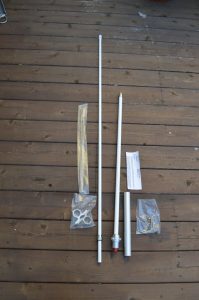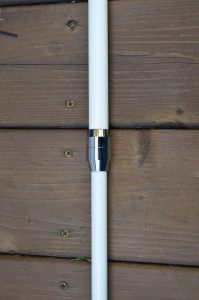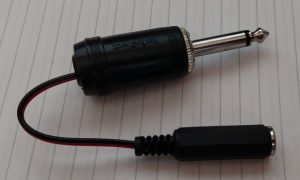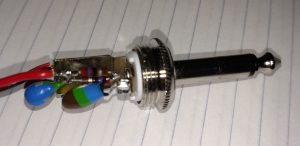TRAM 1480 Dual Band Antenna
I was looking for an inexpensive dual band VHF/UHF antenna to use with my go box radios. I came across a dual band antenna from TRAM on Amazon that was half the price of similar Diamond and Comet dual band antennas.
The specs for the Tram were advertised as follows:
Gain: 6 dB on 2m or 8 dB on 70 cm
VSWR: Less than 1.5:1
Frequency Range: 144-148 Mhz and 430-450 Mhz
Polarization: Vertical
Impedance: 50 Ohm
Configuration: 5/8 Wave 2 Element (2m) and 5/8 Wave 4 Element (70cm)
Power Capacity: 200 Watts
Connector: UHF Female
So I ordered one and in a few days I had it in hand. It was 48 bucks and it was free shipping. Not a bad price at all.
The antenna was packaged nicely and arrived in good condition. The antenna was shipped in two pieces that were less than 54 inches long. Assembled the antenna is just over 8 ft. at 98 inches long. (Click on the thumbnails to enlarge the photo)
The antenna is very similar in design to the Comet antennas and uses the same mounting system as the Comet antenna with a aluminum sleeve at the bottom of the mount with extruded aluminum brackets and stainless steel U-bolts. It was all neatly packaged and all the parts were there.
 The antenna requires assembling the two sections using a Allen setscrew. The required Allen wrenches are supplied with the antenna and the assembly is very easy. With a pair of needle nose pliers you pull the center radiator out of the top section and connect it to the pin on the bottom section.
The antenna requires assembling the two sections using a Allen setscrew. The required Allen wrenches are supplied with the antenna and the assembly is very easy. With a pair of needle nose pliers you pull the center radiator out of the top section and connect it to the pin on the bottom section.
The two sections are shown here, the bottom on the right and the top on the left.
Shown here with the two sections joined with the setscrew.
Then slide the innards back into the antenna and tighten the coupling nut that seals the two halves of the antenna.
Then add the radials, the mounting sleeve, and clamps and attach it to your mast.
The TRAM Dual Band Antenna assembled and ready for SWR testing.
I mounted the antenna on a tripod and attached a 50 ohm coax cable and the MFJ Antenna Analyser. Below is the VSWR I measured at several frequencies across the bands:
| Frequency | SWR | Note |
| 144.0 | 2.3:1 | |
| 144.5 | 2.1:1 | |
| 145.0 | 1.8:1 | |
| 145.5 | 1.6:1 | |
| 146.0 | 1.4:1 | |
| 146.5 | 1.3:1 | |
| 147.0 | 1.3:1 | |
| 147.5 | 1.2:1 | Low SWR @ 147.4 mhz |
| 148.0 | 1.3 |
| Frequency | SWR | Note |
| 440 | 1.4:1 | |
| 441 | 1.3:1 | Low SWR @ 441.4 mhz |
| 442 | 1.4:1 | |
| 443 | 1.5:1 | |
| 444 | 1.5:1 | |
| 445 | 1.6:1 | |
| 446 | 1.7:1 | |
| 447 | 1.7:1 | |
| 448 | 1.7:1 | |
| 449 | 1.7:1 | |
| 450 | 1.6:1 |
Well, so much for the VSWR Spec! The SWR reads a bit high on the MFJ. The FM portion of the 2 meter band seems to be pretty useable and the lower section of the UHF where one transmits seems to be usable. In a functional test with a FT-8900 there was no problems. I could hit the repeaters just find and I could get into the 2 Meter packet nodes with no problem. The rig didn’t show any issues with the antenna and it performed nicely.
All in all, not a bad antenna for 48 bucks.










